Lesson 16
Distinguishing Between Surface Area and Volume
Let’s contrast surface area and volume.
16.1: Attributes and Their Measures
For each quantity, choose one or more appropriate units of measurement.
For the last two, think of a quantity that could be appropriately measured with the given units.
Quantities
- Perimeter of a parking lot:
- Volume of a semi truck:
- Surface area of a refrigerator:
- Length of an eyelash:
- Area of a state:
- Volume of an ocean:
- ________________________: miles
- ________________________: cubic meters
Units
- millimeters (mm)
- feet (ft)
- meters (m)
- square inches (sq in)
- square feet (sq ft)
- square miles (sq mi)
- cubic kilometers (cu km)
- cubic yards (cu yd)
16.2: Building with 8 Cubes
This applet has 16 cubes in its hidden stack. Build two different shapes using 8 cubes for each.
For each shape, determine the following information and write it on a sticky note.
- Give a name or a label (e.g., Mae’s First Shape or Eric’s Steps).
- Determine its volume.
- Determine its surface area.
16.3: Comparing Prisms Without Building Them
Three rectangular prisms each have a height of 1 cm.
- Prism A has a base that is 1 cm by 11 cm.
- Prism B has a base that is 2 cm by 7 cm.
- Prism C has a base that is 3 cm by 5 cm.
-
Find the surface area and volume of each prism. Use the dot paper to draw the prisms, if needed.

- Analyze the volumes and surface areas of the prisms. What do you notice? Write 1 or 2 observations about them.
Can you find more examples of prisms that have the same surface areas but different volumes? How many can you find?
Summary
Length is a one-dimensional attribute of a geometric figure. We measure lengths using units like millimeters, centimeters, meters, kilometers, inches, feet, yards, and miles.

Area is a two-dimensional attribute. We measure area in square units. For example, a square that is 1 centimeter on each side has an area of 1 square centimeter.
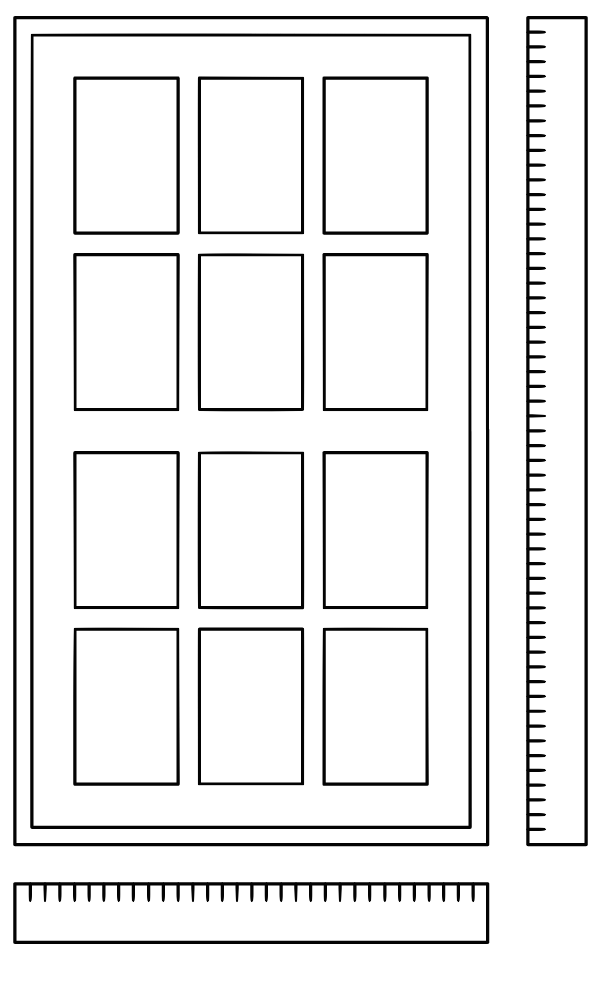
Volume is a three-dimensional attribute. We measure volume in cubic units. For example, a cube that is 1 kilometer on each side has a volume of 1 cubic kilometer.

Surface area and volume are different attributes of three-dimensional figures. Surface area is a two-dimensional measure, while volume is a three-dimensional measure.
Two figures can have the same volume but different surface areas. For example:
- A rectangular prism with side lengths of 1 cm, 2 cm, and 2 cm has a volume of 4 cu cm and a surface area of 16 sq cm.
- A rectangular prism with side lengths of 1 cm, 1 cm, and 4 cm has the same volume but a surface area of 18 sq cm.
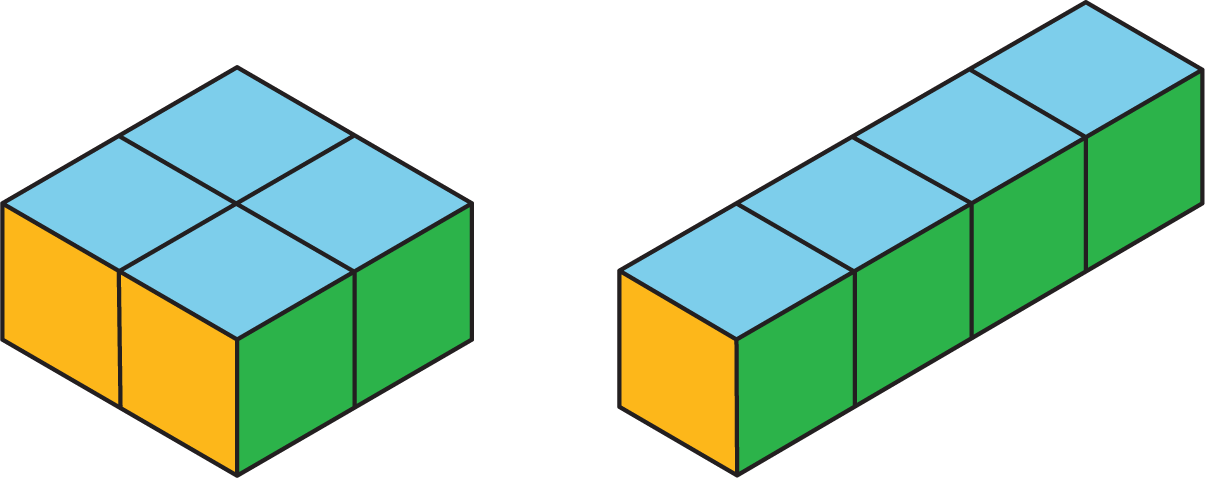
Similarly, two figures can have the same surface area but different volumes.
- A rectangular prism with side lengths of 1 cm, 1 cm, and 5 cm has a surface area of 22 sq cm and a volume of 5 cu cm.
- A rectangular prism with side lengths of 1 cm, 2 cm, and 3 cm has the same surface area but a volume of 6 cu cm.
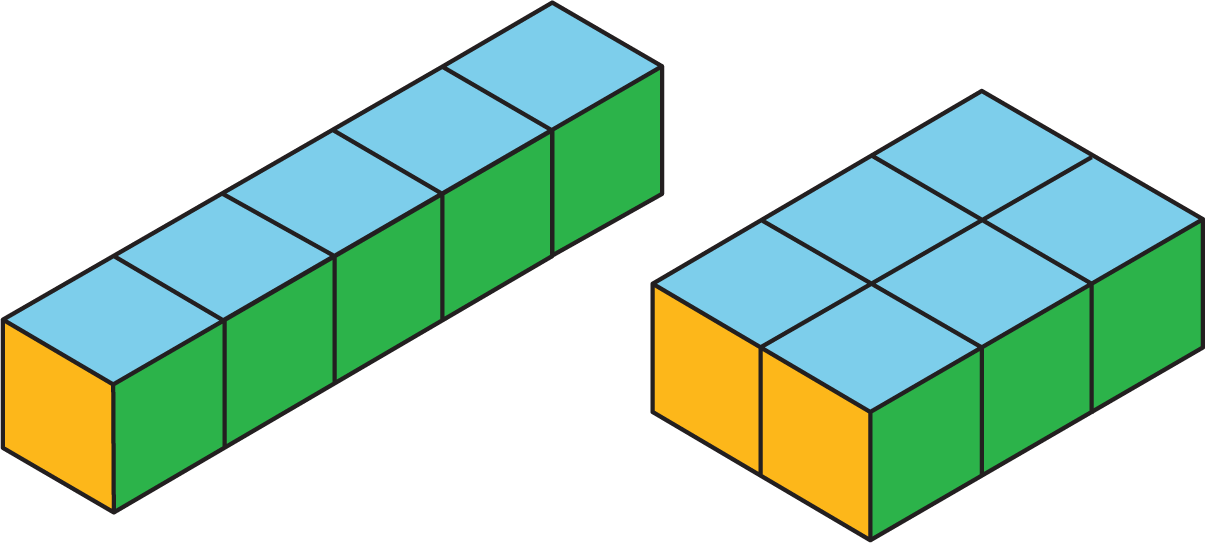
Glossary Entries
- base (of a prism or pyramid)
The word base can also refer to a face of a polyhedron.
A prism has two identical bases that are parallel. A pyramid has one base.
A prism or pyramid is named for the shape of its base.

- face
Each flat side of a polyhedron is called a face. For example, a cube has 6 faces, and they are all squares.
- net
A net is a two-dimensional figure that can be folded to make a polyhedron.
Here is a net for a cube.
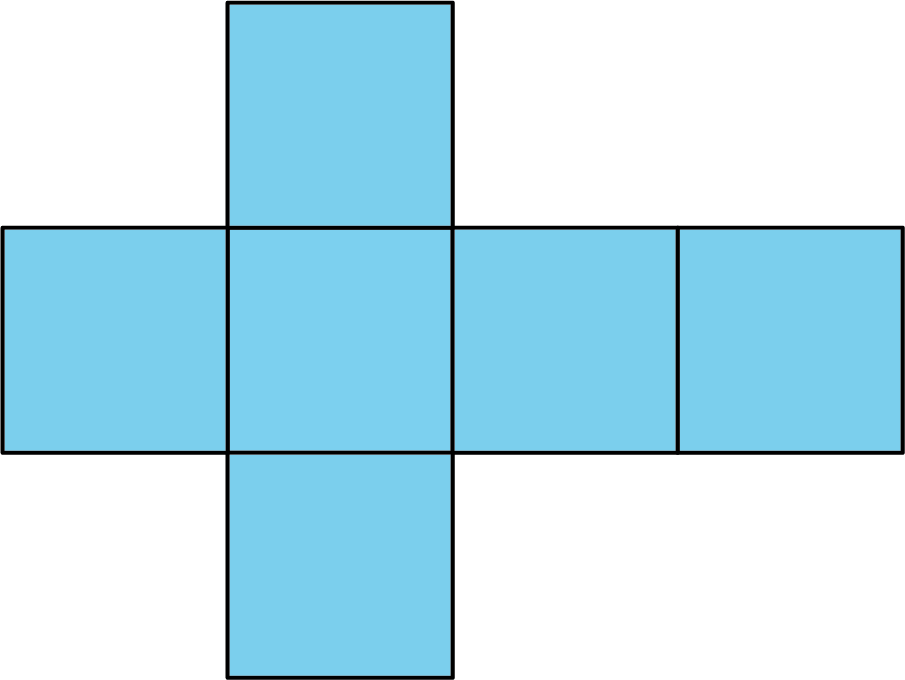
- polyhedron
A polyhedron is a closed, three-dimensional shape with flat sides. When we have more than one polyhedron, we call them polyhedra.
Here are some drawings of polyhedra.

- prism
A prism is a type of polyhedron that has two bases that are identical copies of each other. The bases are connected by rectangles or parallelograms.
Here are some drawings of prisms.
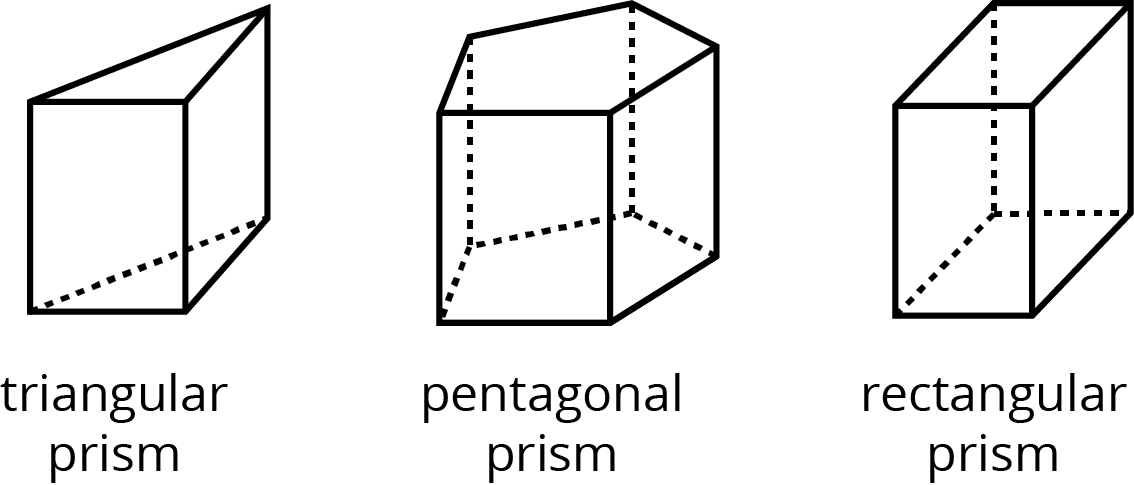
- pyramid
A pyramid is a type of polyhedron that has one base. All the other faces are triangles, and they all meet at a single vertex.
Here are some drawings of pyramids.
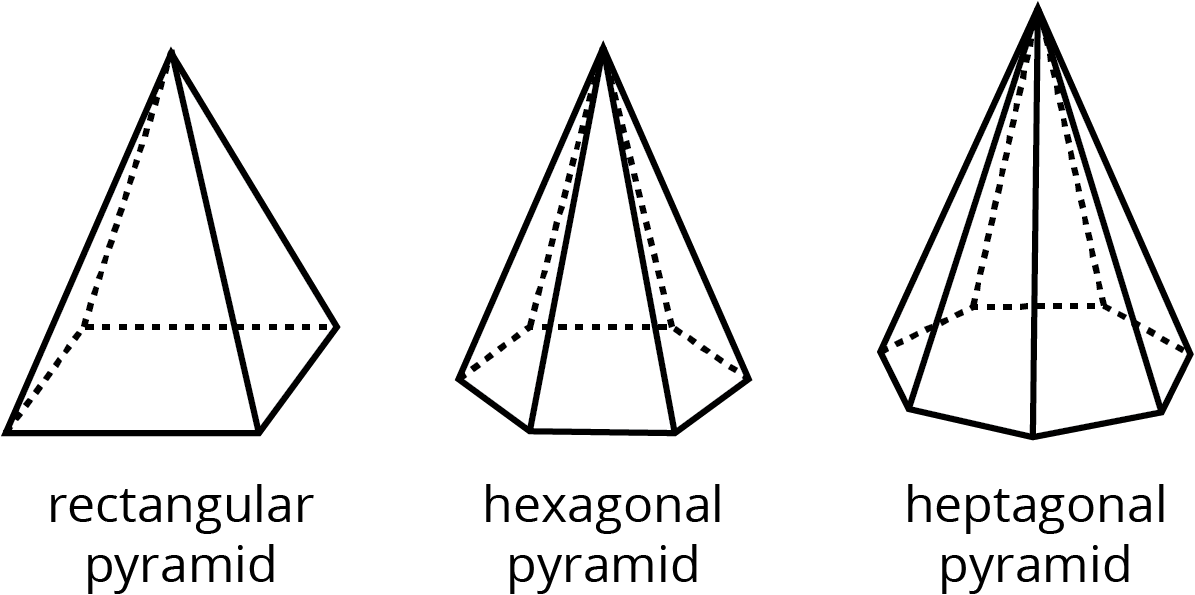
- surface area
The surface area of a polyhedron is the number of square units that covers all the faces of the polyhedron, without any gaps or overlaps.
For example, if the faces of a cube each have an area of 9 cm2, then the surface area of the cube is \(6 \boldcdot 9\), or 54 cm2.
- volume
Volume is the number of cubic units that fill a three-dimensional region, without any gaps or overlaps.
For example, the volume of this rectangular prism is 60 units3, because it is composed of 3 layers that are each 20 units3.
